Recent Posts:
eLearning offers new options for go2market programs
With new drugs, technologies and treatments being launched every day, there’s a constant need for education in the healthcare world. From sales reps to doctors to patients, the demand for relevant and timely information on new developments is ongoing. For healthcare marketers, eLearning programs offer an efficient and practical way to support go2market strategies and new product launch programs, as well as a way to support end customers with information and training.
- 5 min read
- Jan 23, 2019 2:37:55 PM
6 ways to share your sustainability story more effectively
Are you sharing your reporting on your organization’s sustainability activities with your stakeholders? If you are, congratulations – you’ve taken a key step on your sustainability journey. A sustainability report is one way to share your sustainability story with your various stakeholders. However, there’s a lot more that you can do to get the message across – and a lot more value that you can derive from it. Here are six ways you can share your sustainability story more effectively:
- 4 min read
- Jan 22, 2019 2:35:55 PM
Create sales enablement tools that sales want to use
In many organizations, sales tools are like an iceberg. There’s the 10% that are above the waterline – the tools that everybody knows and uses - and then there’s the 90% that, for whatever reason, never see the light of day. Whether people simply can’t find these tools, or they don’t like them, the end result is the same – it’s expensive and frustrating to create a library of tools that sales just doesn’t use.
- 6 min read
- Nov 21, 2018 1:34:44 PM
Aligning sales and marketing for better results
Just as the old model of news dissemination has been shattered – a few dominant outlets now replaced by a cacophony of voices - so has the traditional approach to healthcare marketing. Your healthcare B2B customers are turning into B2C right before your eyes, side-stepping your funnel and doing research and evaluation on their own, without seeking a contact with your sales team. According to a 2017 study by research company Forrester, 68% of B2B customers said they preferred to do their own research, rather than interact with a sales rep. This is a big change over 2015, when this figure was only 40%.
- 4 min read
- Nov 21, 2018 1:34:24 PM
13 digitale marketingupdates die je niet mogen ontgaan [oktober]
De tech & marketingwizards van Facebook, Instagram, Google en LinkedIn zijn achter de schermen weer druk in de weer geweest om uit te kunnen pakken met nóg spectaculairdere, interactievere en vooral nog méér digitale marketingupdates en features. Kortom, nieuws waar je als digitale marketeer maar beter van op de hoogte bent. Wij hebben de laatste nieuwe marketingtrends voor jou even in een mooi overzichtje gegoten:
- 13 min read
- Oct 25, 2018 2:16:09 PM
Voice of Customer sessions offer deep insight into your target groups
Can you hear what your customers are really saying? For many marketers, the information they receive about customer comments or complaints is mostly anecdotal. A key account manager might mention that clients really like one particular product attribute, or that they have no use for another. The business development team might pass along what they’re hearing from prospects. Comments on social media or on your website give you some insight, but typically only capture feedback on a single topic or event.
- 4 min read
- Oct 18, 2018 3:01:50 PM
Missed opportunity: are you optimizing your sustainability reporting?
First things first – is your organization already reporting on its sustainability practices? More and more companies are engaging in sustainability reporting, as this study from KPMG demonstrates, for all kinds of reasons. For some it’s now legally mandatory. In Belgium, for example, large enterprises employing more than 500 people are now legally obliged to report on their social and environmental impact. This is in line with EU Directive 2014/95/EU, which stipulates that large companies in member states must now disclose information on their sustainability and diversity practices, effective for financial years beginning on or after January 1, 2017.
- 5 min read
- Oct 3, 2018 4:13:15 PM
Making your mark as a healthcare vendor when your core business focuses on rare diseases
Making your mark as a healthcare technology company or pharmaceuticals supplier can be challenging, especially if your core business focuses on rare diseases. You can find yourself restrained by strict regulations, while trying to address the sensitivities of your various stakeholders.
- 3 min read
- Sep 25, 2018 12:01:00 PM
Why you should be talking about your company’s sustainability practices
If a tree falls in the forest, and there’s nobody there to hear it – does it make a sound? It’s the same for your organization’s sustainability practices. If you’re not actively promoting your sustainability initiatives, you’re missing a key opportunity to strengthen your company’s reputation and perception in the public eye, as well as your corporate valuation.
- 5 min read
- Sep 18, 2018 3:31:30 PM
Contact us
Lists by Topic
- B2B marketing (34)
- Healthcare (27)
- B2B marketing strategy (21)
- Content marketing (20)
- inbound marketing (20)
- B2B content marketing (19)
- Healthcare Marketing (16)
- branding (10)
- Digital marketing updates (8)
- Sustainability (8)
- reference marketing (8)
- B2B social media (7)
- Digital marketing strategies (7)
- Social media marketing (7)
- lead generation (7)
- B2B Business Plan (6)
- Customer Reference Program (6)
- Digital marketing trends (6)
- Employer branding (6)
- Social Media (6)
- Visual identity (6)
- analytics tools (6)
- digital marketing (6)
- videomarketing (6)
- Digital marketing plan (5)
- Smarketing (5)
- brand identity (5)
- sales and marketing (5)
- sonar (5)
- Communication (4)
- SEO (4)
- Video marketing (4)
- content (4)
- digitale marketing (4)
- metrics (4)
- online strategie (4)
- showpad (4)
- Content plan (3)
- Customer Reference (3)
- Marketing Metrics (3)
- Marketing automation (3)
- Measure ROI (3)
- Sales Enablement tools (3)
- business identity (3)
- hubspot (3)
- marketing analytics tools (3)
- online marketing (3)
- sociale marketing (3)
- web site (3)
- AI (2)
- B2B marketing plan (2)
- Blogs (2)
- Customer Reference Strategy (2)
- Facebook marketing (2)
- Google updates (2)
- Growth Marketing (2)
- Market your content (2)
- Print (2)
- ROI (2)
- Voice of Customer sessions (2)
- analytics (2)
- brand (2)
- corporate identity (2)
- corporate narrative (2)
- dashboard (2)
- design (2)
- digitale marketing analytics (2)
- logo (2)
- marketing analytics (2)
- marketing trends (2)
- neuromarketing (2)
- positioning (2)
- reporting (2)
- reporting service (2)
- visual (2)
- visual story (2)
- Content promotion (1)
- Digital marketing in China (1)
- Facebook live (1)
- Inbound recruitment (1)
- Inoffensive close (1)
- Market Research (1)
- Marketing ROI (1)
- More online traffic (1)
- New media (1)
- Podcasts (1)
- SEO trends 2018 (1)
- SMART goals (1)
- SMART goals and objectives (1)
- SMART marketing goals (1)
- Sales (1)
- Sales in modern age (1)
- Veeva (1)
- blogging (1)
- brand design (1)
- business (1)
- creating effective content (1)
- infusinar (1)
- internal communication (1)
- loyalty (1)
- loyalty ladder (1)
- marketing manager (1)
- marketing plan (1)
- marketing trends 2018 (1)
- online campaign (1)
- search engine optimization (1)
- storytelling (1)
- tips and tricks (1)
- visual branding (1)



%20(1).png)
